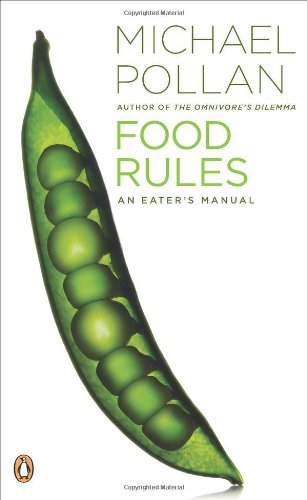In Desiring the Kingdom James K.A. Smith contends that humans are imaginative, desiring, loving, affective creatures more than automatons driven by cognitive, intellectual perceptions. He writes, “We feel our way around our world more than we think our way through it.” As such, our imaginations need to be converted and enacted through “intentional practices that are tactile, bodily, repetitive, and narratival.”
 Last semester I attempted to offer my students such tactile resources in my history course on modern America. Their assignment, based on Michael Pollan’s “food rules,” was as follows:
Last semester I attempted to offer my students such tactile resources in my history course on modern America. Their assignment, based on Michael Pollan’s “food rules,” was as follows:
Rationale: Most modern-day Americans don’t go hungry. They also do not practice good nutrition. They are “sustained” by lots of highly processed foods and meat, added sugar, and refined grains. Consequently, say health authorities, Americans suffer high rates of obesity, type 2 diabetes, cardiovascular disease, and cancer. By contrast, populations that eat more traditional diets don’t suffer as acutely from these diseases. Among 63 other suggestions, Michael Pollan in his book Food Rules: An Eater’s Manual (2009), offers this rule for healthy eating: “Don’t eat anything your great-grandma wouldn’t recognize as food.”
Here are a few more of Pollan’s 64 rules for healthy eating:
- Eat food.
- Avoid food products containing ingredients that no ordinary human would keep in the pantry.
- Avoid food products that contain high‐fructose corn syrup.
- Avoid food products that have some form of sugar (or sweetener listed among) the top three ingredients.
- Avoid food products that have more than five ingredients.
- Eat only foods that will eventually rot.
- Eat foods made from ingredients that you can picture in their raw state or growing in nature.
- Eat sweet foods as you find them in nature.
- Don’t eat breakfast cereals that change the color of the milk.
- The whiter the bread, the sooner you’ll be dead.
- Stop eating before you’re full.
- Eat when you are hungry, not when you are bored.
- The banquet is in the first bite.
- Limit your snacks to unprocessed plant foods.
- Do all your eating at a table.
- Break the rules once in a while.

Instructions: Your assignment is to track your diet while attempting to follow Pollan’s rules. Keep a “food journal” that chronicles all the food you eat (including all meals, snacks, and liquids) in the course of two days.
Paper: Write a two-page paper reflecting on your experience. How difficult is it to follow Pollan’s rules? How does modern eating look when put in historical perspective?
In my next post, I’ll describe my students’ reactions to the assignment. Here is a “taste”:
- “I am very partial to Lucky Charms and they actually had it in the cafeteria for a couple of days and I couldn’t take advantage of the opportunity. Thanks a lot Pollan!”
- “One rule was easy to follow: ‘Break the rules once in a while.’ Had Sockeye salmon, brococoli, sweet potato, grape juice for dinner, then splurged on a popcorn and small coke at the Avengers midnight release.”












